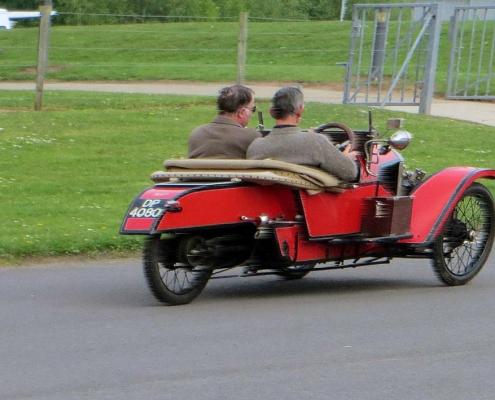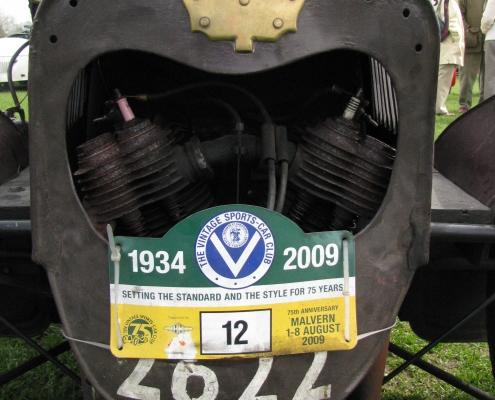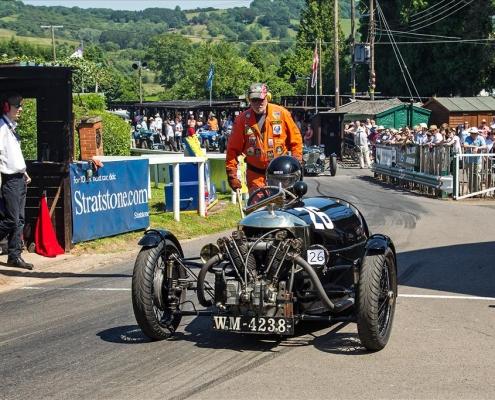The Two Speed Morgan
The Two-Speed Morgan 1909-1932
When Henry Morgan designed his first three-wheeler back before WW1, simplicity lay at its heart. The basic chassis layout was elegantly uncomplicated whilst achieving three-wheel independent suspension using swinging forks at the rear and sliding pillar at the front. Bodywork was virtually non-existent and steering was by a tiller arrangement. Transmissions for any motorised vehicle at the time seldom had more than three ratios, and often only one. In the case of motorcycles, even a clutch was a luxury item! The complication of a reverse gear was unnecessary with a vehicle so light as were front brakes. Instead, drivers relied on two externally contracting band brakes on the rear wheel which squealed like a stuck pig on occasions but weren’t too bad when dry . . . The two speeds were achieved by having two chains to the rear wheel giving high and low ratios either of which could be selected leaving a neutral in between. The engines that Morgan experimented with at the beginning ranged in capacity from 680cc to 1000cc and were almost exclusively V twins giving an excellent power to weight ratio.
Over the years leading up to the introduction of the three speed and reverse models, the design evolved to become more robust, to include enclosed bodywork, a proper steering wheel, electric lightings sets and from 1926 onwards to have front wheel brakes as standard. The transmission also evolved from the B Type acquiring the re-designed and much improved M type bevel box, forks and springs, together with a powerful 8” drum brake in 1929. Engines, too, increased in variety, capacity and power.

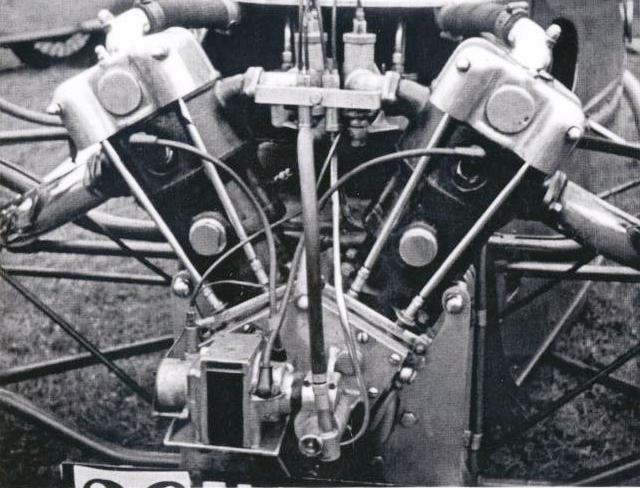
No28, BFK121. Close-up of Blackburne engine. Madresfield, May 6th .
 The engines were always “bought in” and after flirting with a number of small volume manufacturers in the pre-war years, Morgan settled on significant numbers of units from mainstream suppliers such as J.A.P, Swiss made MAG, British Anzani and Blackburne. Of these, J.A.Ps were the most successful and supplied more engines over a longer timespan than the others, continuing into the 3-speeder era until finally being superseded by Matchless in 1933. J.A.Ps also saw greater competition success than the others although between 1922-27, Blackburne had considerable success. The MAG was beautifully made and ran very quietly and reliably. British Anzani, however, had a disastrous start with Morgans in 1922. They only recovered some of their dignity after the original company went bust and its successor re-designed the valve gear making them an acceptable, though not unduly powerful option. Options of overhead valve or side valve (or in the case of MAG overhead inlet/side exhaust), water or air cooled were available from most of these makers. The cheaper air-cooled side valves found their way on to the Standard and Popular models whilst the more expensive overhead valves could be specified for the more sporting variations.
The engines were always “bought in” and after flirting with a number of small volume manufacturers in the pre-war years, Morgan settled on significant numbers of units from mainstream suppliers such as J.A.P, Swiss made MAG, British Anzani and Blackburne. Of these, J.A.Ps were the most successful and supplied more engines over a longer timespan than the others, continuing into the 3-speeder era until finally being superseded by Matchless in 1933. J.A.Ps also saw greater competition success than the others although between 1922-27, Blackburne had considerable success. The MAG was beautifully made and ran very quietly and reliably. British Anzani, however, had a disastrous start with Morgans in 1922. They only recovered some of their dignity after the original company went bust and its successor re-designed the valve gear making them an acceptable, though not unduly powerful option. Options of overhead valve or side valve (or in the case of MAG overhead inlet/side exhaust), water or air cooled were available from most of these makers. The cheaper air-cooled side valves found their way on to the Standard and Popular models whilst the more expensive overhead valves could be specified for the more sporting variations.
There was a range of models. 1909 saw the prototype “Runabout” which then went on sale in single seat form in 1910-11. The extra seat was available from 1911-15. At the same time, the Sporting and the De Luxe models came in, the former being sold up to 1921 and the latter until 1931. At some point Henry Morgan had a rush of blood to the head and started work on a four wheeled version. Chris Booth acquired the remains of the chassis, which had survived for a century, squirreled away at the factory, and brought it, somewhat over-term, to birth.
In 1913, prior to the Amiens Cyclecar Grand Prix which was won by Gordon McMinnies, the Grand Prix was added and that continued until 1926. This was the first Morgan to have the iconic domed nickel silver radiator.
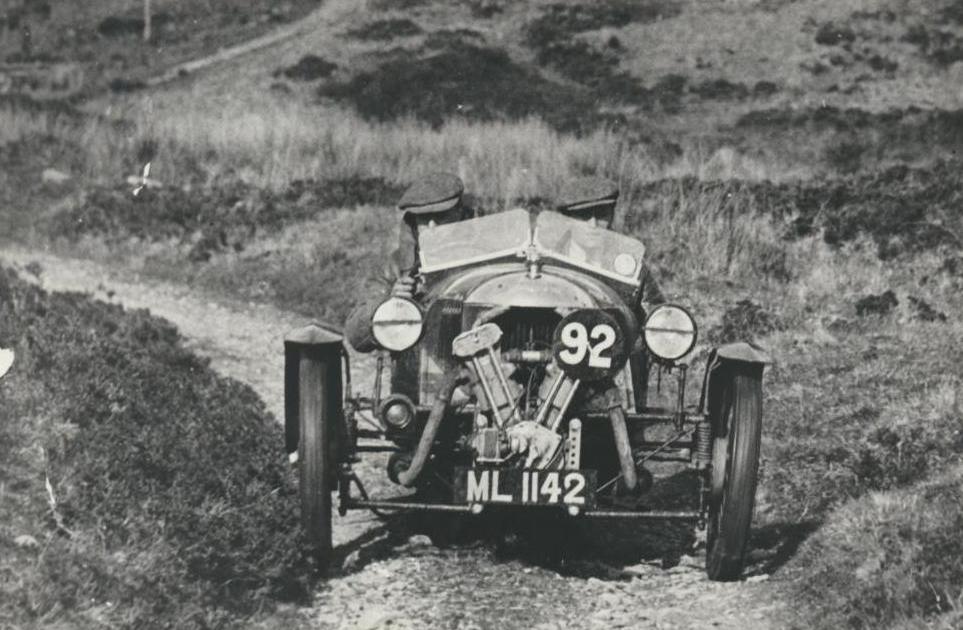 J.A.P Engined Morgan
J.A.P Engined Morgan



Albert Bull
During the war, Morgan, keen to get involved with the war effort, designed a machine gun carrier but it was never produced although it indicated a preparedness to think out of the box. During the war, a very few Special Sporting Models were made, one of which can be seen in a period photo with its owner Captain Albert Ball VC but alas, none have survived.
Post war, the Standard or Popular made an appearance (those with bodies made of French poplar lost the “u” but the wood was rapidly abandoned as the embedded shrapnel quickly wrecked the woodworking machinery!) This was a bargain basement version that ran until 1929.
Again, post war, a new market was entered with the Family and Aero 4-seaters offering rear seats for children (or legless adults). These ran into the 3-speeder twin cylinder era and then morphed into the Ford engined F4.
The stylish Aero could be had to special order from 1917 until 1921 after which it was a catalogue model. The body gradually lost its flat panels which were replaced by some more enticing curves. This model ran beyond the end of the two-speeder era and continued in very small numbers as three-speeders.
The success of the Aero in competition led to chassis and engine developments, the chassis being lowered and the track between the front wheels being increased to give much better stability. The most noticeable change was a sleek new body style pioneered in 1926 which then became the Aero Super Sports or “Super Aero”. The pioneer of this development is still alive and kicking powered by an ohv Blackburne.
Throughout its development the 2-Speeder fed on its competition success in all manner of speed events and in sporting and reliability trials. This is something that continues to this day with legends like Gary Caroline and Sue Darbyshire doing David and Goliath feats amongst the Bentleys and Bugattis.
Adrian Murray-Leslie


Sue Darbyshire












